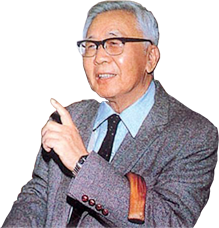2019 Workshop on quantum information
2019 Workshop on quantum information
Content
Talks:
(1) Speaker: Zhengwei Liu (Harvard University)
Title: Picture language program
Abstract: We discuss the appearance of pictures in mathematics. We emphasize a bi-directional process between picture language and mathematical concepts: abstraction and simulation. This provides a program to understand different subjects, using virtual and real mathematical concepts simulated by pictures.
(2) Speaker: Weichen Gu (Academy of Mathematics and Systems Science)
Title: A new duality on graph invariants and its application in quantum information
Abstract: We find a new duality on some graph invariants, and study its mathematical properties and its connection with some entropy in information theory. Furthermore, we provide its interpretation and application in quantum information.This is a joint work with Kaifeng Bu.
(3) Speaker: Yunxiang Ren
Title: Applications of Planar algebras to Graph theory
Abstract: Planar algebras were introduced by Jones as an axiomatization of standard invariants for subfactors. This topological viewpoint for subfactors provides a natural interpretation of problems in graph theory and further tools to study them. In this talk, we will describe the idea of applying planar algebras to graph theory, specifically to the independence number and Shannon Capacity of graphs.
(4) Speaker: Alex Wozniakowski
Title: An Introduction to Supervised Deep Learning
Abstract: In this talk we discuss some elementary concepts in deep learning, which is a resurgent subfield of machine learning. We start by reviewing the basic recipe for constructing a machine learning algorithm, and we utilize this recipe to study the supervised learning problem. Deep learning algorithms are frequently designed to solve supervised learning problems, achieving state-of-the-art performance on benchmarks in computer vision, speech recognition, natural language processing (NLP), etc. We study the basic constituents of deep learning architectures, namely artificial neurons, such as the sigmoid family, softmax, and ReLU (rectified linear unit). Moreover, we study agglomerations of artificial neurons into deep artificial neural networks, which have neuroscientific and biological inspiration.
(5) Speaker: Shunlong Luo (AMSS)
Title: Symmetry Quantification
Abstract: By exploiting the algebraic and geometric structure of operation-state coupling, we show that an information-theoretic measure of symmetry emerges naturally from the formalism of quantum mechanics. This is achieved by decomposing the operation-state coupling into a symmetric part and an asymmetric part, which satisfy a conservation relation. The symmetric part is represented by the symmetric Jordan product, and the asymmetric part is synthesized by the skew-symmetric Lie product. The latter leads to a significant extension of the celebrated Wigner-Yanase skew information, and has an operational interpretation as quantum coherence of a state with respect to an operation. This not only puts the study of coherence in a broad context involving operations, but also presents a basic framework for quantitatively addressing symmetry-asymmetry complementarity.
(6) Speaker: Zhengwei Liu
Title: Topological design of protocols
Abstract: We will discuss the application of picture language in quantum information. We introduce a new method to design protocols following pictorial intuition. This leads to the discovery of new multiparty communication protocols.
(7) Speaker: Kaifeng Bu (Zhejiang University)
Title: One-shot resource theory
List of participants:
Arthur Jaffe (Harvard University)
Zhengwei Liu (Tsinghua University)
Alina Vdovina (Newcastle University)
Shunlong Luo (AMSS)
Zhenghan Wang (AMSS)
Xun Gao (Harvard University)
Yunxiang Ren (Harvard University & Max-Planck institute)
Fei Wei (Harvard University)
Kaifeng Bu (Harvard University)
Sirui Lu (Tsinghua University)
Alex Wozniakowski (NTU, Singapore)
Yihong Zhang (Tsinghua University)
Youwei Zhao (USTC and Quantum Physics Institute Shanghai)
Boqing Xue (AMSS)
Together with 15 students from AMSS.

